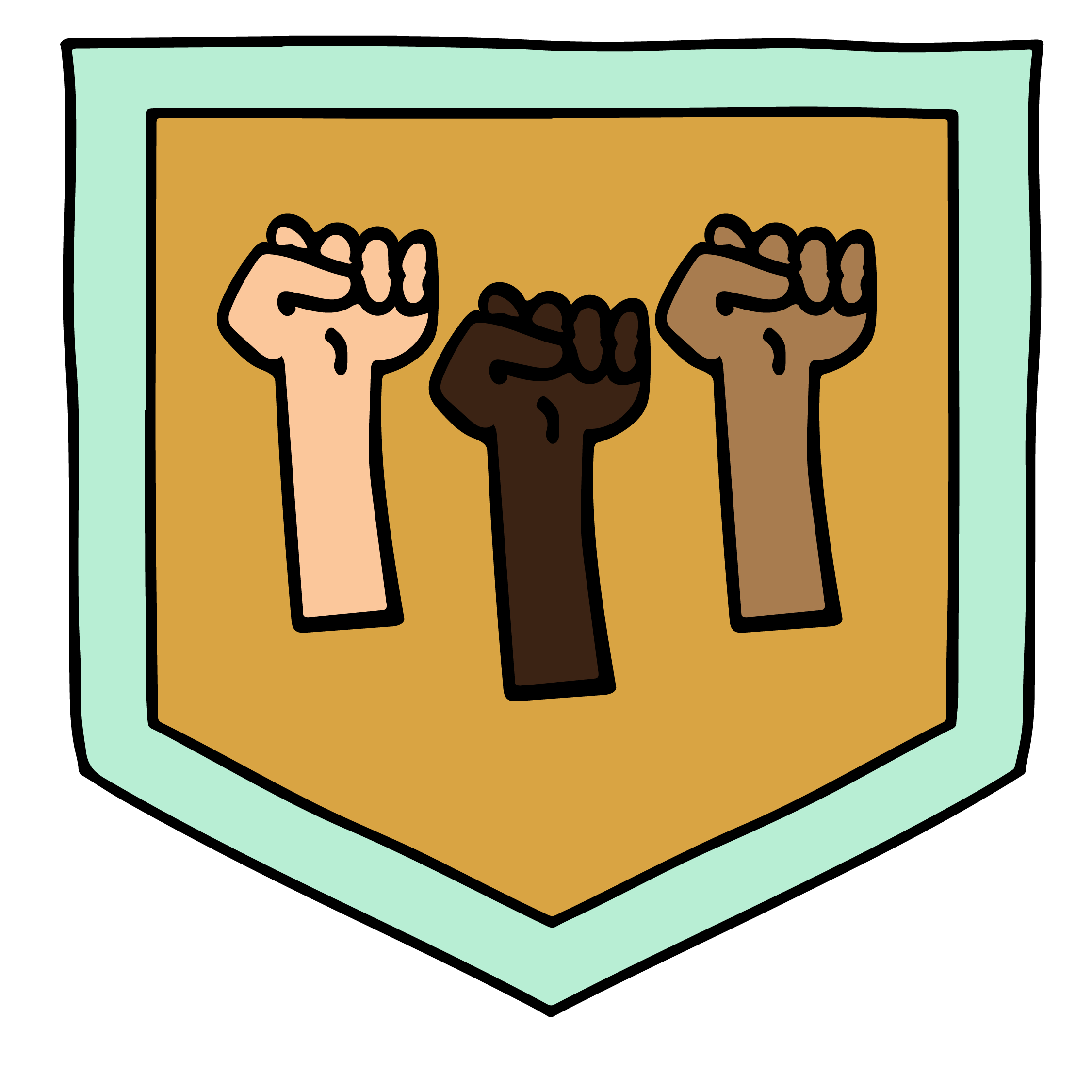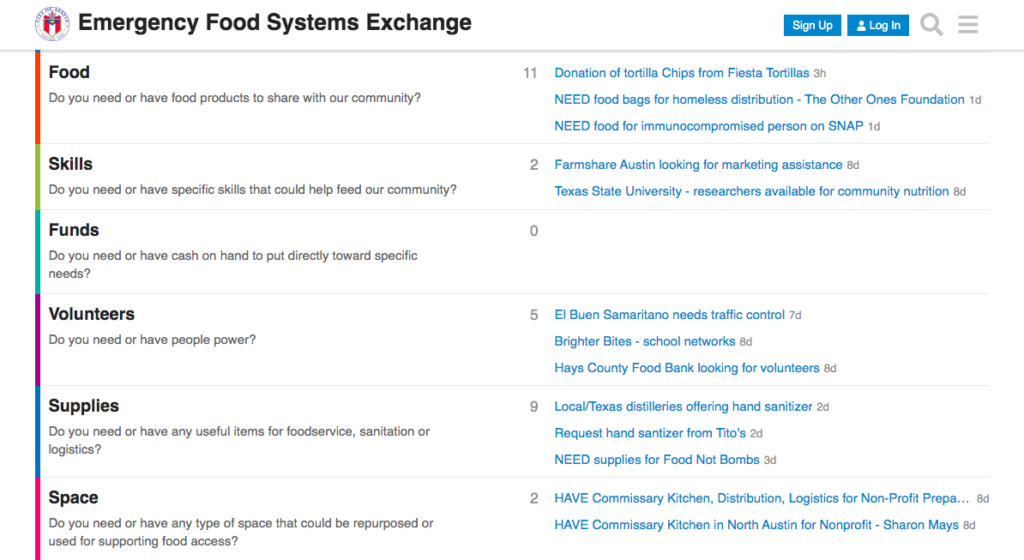
Summary
The need for emergency food resources has put a strain on Austin's traditional food network, forcing the city, entrepreneurs, and nonprofits to get a bit more creative.

Action Box
If you want to help the growing number of Austinties in need of food, consider donating or volunteering with the Central Texas Food Bank.
You can feel it in the air. The anxiety. The suffering. The deep-seated knowledge that things will likely get worse before they get better.
Even before the pandemic hit, people in Austin were struggling. A 2018 report from the city’s Office of Sustainability showed that 15 percent of Travis County residents and 21 percent of kids in Travis County were food insecure. It’s hard to know exactly what that number is now, but we know it’s about to grow. According to the Texas Tribune, “The week ending March 21 saw an 860% increase in unemployment filings over the previous week’s total, and a 670% increase over the average claims filed each week during the Great Recession.”
So how do we feed all these people who are now in need? And how do we do it in a world where we’re not allowed to get within 6 feet of another human being?
“We have a great system in place through the city and the county to address natural disasters,” said Edwin Marty (Food Policy Manager with the City of Austin Office of Sustainability) in an interview with The Austin Common earlier this week. “We’ve got great models, we’ve got great systems… The challenge at this point is I don’t think there was complete comprehension of the extent to which all of those systems would have to pivot when we could no longer rely on bringing people together and providing resources at a single point.
Certainly the emergency feeding network had been completely built around the idea that, just bring people to one location, cluster resources, distribute those resources at a single point, and then that’s the most efficient way to distribute resources. Having to radically change that in an incredibly short timeline… is pretty challenging.”
Which means people have had to get really creative, really fast.
For the city, that’s meant hosting twice weekly phone calls with over 75 different emergency feeding organizations, gaining a deeper understanding of their needs and resources, and seeing where the city can support or scale these efforts.
One of the first things they noticed was that the need for emergency food is so large and so changing, that the city couldn’t possibly address all of it. So, they decided they needed a way for this information to get out to the public, enabling more businesses, organizations, and stakeholders to get involved. Together with the city’s Office of Design and Delivery and UT Medical School’s Design Institute for Health, they created a resource-matching website in just four days.
Dubbed the Emergency Food Systems Exchange, the site allows organizations to share their needs or available resources across several different areas – food, skills, funds, space, and volunteers. The idea is to provide the space for creative ideas to take shape.
Bringing Food To Those In Need
One of the creative ideas that is already taking shape in the community is being led, in-part, by Joi Chevalier.
Joi is a local food expert, founder of the Cook’s Nook (an incubator space for food entrepreneurs), a member of Austin’s Food Policy Board, and a member of the Google Refresh Food+Tech Working Group.
As someone who is knowledgeable about the way our local food system really works, Joi quickly caught onto the fact that a lot of Austin’s food comes from major food distribution warehouses that normally supply places like universities, corporate offices, caterers, and restaurants… most of which are now closed.
“And I went, oh my gosh, where’s that food going? Nowhere,” Joi said during an interview with The Austin Common earlier this week. “That fresh food is going nowhere fast. Wow! That stuff has a shelf life. That stuff is going to rot. It’s rotting as we speak.”
So, Joi thought, what can we do with all that food?
Because the reality is, as Joi explained, “while we have a beautifully funded food bank who does amazing work, what we’re seeing is, in times of real catastrophe, that’s going to be insufficient.”
Pretty quickly, a coalition of organizations (including Keep Austin Fed), came together to come up with a way to use all that warehouse food.
Here’s the idea – buy the warehouse food (that would otherwise go to waste) at a low cost, use local kitchen spaces like the Cook’s Nook to turn that food into prepared meals, hire local restaurant workers to help do the cooking, and partner with direct-service organizations to distribute the food to those in need.
If all goes well, the goal is to produce 4,000 to 5,000 meals a week through this program. According to Joi, the proposal has been shared with Council, who will make a final decision at next week’s meeting. (Funding is needed to turn this idea into a reality.) If it’s approved, Joi thinks they can be up and running by mid-April.
“They have the food,” explained Joi. “We have a network of those who know how to transform food. We have kitchens. We have spaces. We have people who need to be put back into work who know how to do this. And then we have those who already are in the business of doing this sort of distribution. And it’s, how do we really make the innovative public and private relationship work?”
Distributing Resources Equitably and Planning For The Future
In just the few weeks that the effects of social distancing have really started to be felt in Austin, the city has been receiving lots of proposals (like Joi’s) for new ways to distribute food to those in need. As Edwin explained, in order to sift through it all, the city has come up with four main “clusters” of need and is now trying to figure out where it can bolster and support responses for those community members.
Those clusters are:
-
People experiencing homelessness, which as Edwin explained, is one off the most pressing needs right now
-
Austin’s food insecure population that also lacks mobility and close access to a grocery store – Could access to low-cost home delivery services be increased? Could restaurants or community spaces be converted into food retail spaces?
-
Austin’s food insecure population that does have access to transportation
-
Seniors, especially those with limited mobility
Through it all, Edwin and the city are trying to learn from this COVID-19 pandemic.
“We are taking copious notes about what we could do to be better prepared in the future,” Edwin said. The city is also entering into partnership with other cities around the country to document what everyone is doing to respond to this crisis, share best practices, and be better prepared for the future.
“We know, unfortunately, that this pandemic is probably just the tip of the iceberg in terms of what we should expect over the coming generations,” Edwin said. “And so the better that we can think through all of the different ways that our food system needs to be built to respond to these kind of pandemics, the better off we’ll be.”
Even before COVID-19 hit, food system resiliency was already on the top of Edwin’s mind. With this crisis, the need for stronger resiliency cannot be more clear.
As Edwin explained, the city is already working closely with the Center for a Livable Future (and several other cities) to look through lessons learned.
“And then over the next six months, if all goes well,” Edwin said, “we’ll have some support academically to tease through lessons learned and develop a protocol for how communities can develop sustainable, equitable, and resilient food systems.”




